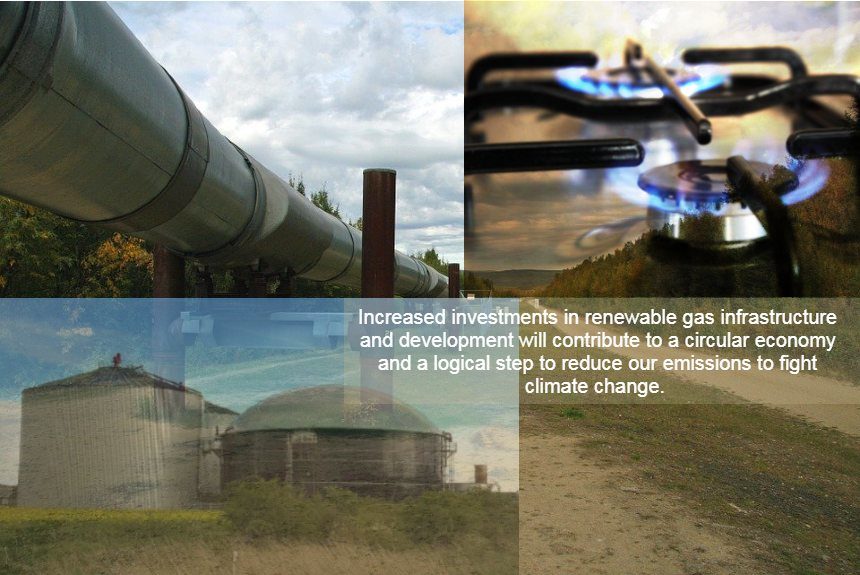Organic waste like food waste, wastewater, livestock manure, and agricultural waste produces methane gas as they decompose.
Methane gas is a potent GHG gas that traps more heat in the atmosphere than CO2. But methane emissions can be avoided when captured and used as a fuel known as renewable natural gas.
Capturing methane from our waste and using it for heating, cooking, and fuel promotes sustainability, a circular economy, while reducing GHG emissions.
The Sydney Morning Herald reports that the Malabar Wastewater Treatment Plant, one of the city’s main water treatment plants, will soon provide renewable gas to its residents through the Malabar Biomethane Injection Project.
According to the article, the production of biomethane gas from waste will allow residents to choose a clean energy source. Replacing natural gas with biomethane or hydrogen will also help NSW industries meet their net-zero emissions target.
According to Water Minister Melinda Pavey, the Malabar WTP will process wastewater from 1.4 million households in Sydney, and gas harvested from it will be 60% methane. She also projects that from 2022, the plant will generate enough biomethane gas to supply 6300 homes.
The NSW government hopes that this plant will lead many ventures of this kind around the country.
Renewable gas, a fuel for the future
Increased investments in renewable gas infrastructure and development will contribute to a circular economy and a logical step to reduce our emissions to fight climate change.
What is renewable gas, and where does it come from, and are there different types of it.
According to Australian Gas Networks, renewable gas comes in two primary forms – renewable hydrogen produced by separating hydrogen and water, and biomethane, gas generated from decomposing organic wastes from landfills, agricultural produce, and wastewater treatment facilities.
Click the link to read more about renewable gas.
The Greenbiz article says that renewable gas production in the U.S. is growing. In the last 5 years, renewable gas production from waste has tripled. Now, the country has 115 renewable gas plants.
According to the article, increasing uptake of renewable gas plants can contribute to a net reduction of methane emissions and contribute to the country’s decarbonisation goals. Renewable gas can also replace natural gas- a fossil fuel gas while delivering environmental benefits related to waste management.
Sources of renewable gas in the U.S.
In the U.S., 90% of renewable gas comes from its landfills. Many of its landfills have a methane collection mechanism in place as it is more economical to do this because of the concentration of methane gas in one area. Other waste like corn plants, grass and tree trimmings, nutshells can also be a potential source of biomethane gas.
Uses of renewable natural gas and its climate impacts
Natural gas in the U.S. is mainly used as a transportation fuel and a substitute for diesel in heavy-duty vehicles. Using renewable fuel substitutes is driven by government mandates such as California’s Low Carbon Fuel Standard and the federal Renewable Fuel Standard.
Increased renewable gas production can help avoid GHG emissions that standard waste management practices would normally emit. It could also displace fossil fuels such as diesel use in heavy-duty vehicles.
According to the article, calculating the impacts of renewable gas from the production stage (use of electricity to convert waste to gas), along the supply chain to consumption, including chances of methane leaks, and avoided emissions, experts find that renewable gas avoids more emissions than it generates, resulting to a “negative-carbon intensity”.
Quantifying the benefits of renewable energy production can help decision-makers identify projects that can deliver the most climate benefits.
The article also mentions common concerns about renewable natural gas, particularly whether it has a meaningful climate and environmental benefits. According to the report, renewable gas from wastes is primarily composed of methane, and when burned, produced CO2.
The release of CO2 rather than methane is less harmful to the environment as methane gas is up to 86 times stronger than CO2 in trapping heat in the atmosphere.
How much renewable natural gas can the U.S. produce?
The U.S. generates millions of tons of food waste, sewage, oil, livestock manure and other waste each year. Some of its wastewaters are already used to generate biogas, while food wastes are turned into fertilisers or animal feed.
Estimates suggest that the country can produce 780 to 1,400 billion cubic feet (BCF) of biomethane or equivalent to 4-7% of its natural gas consumption. But including crop and forestry waste, it could reach as much as 2,200 (BCF).
Using an emerging technology called thermal gasification, a low-carbon fuel generated through this process is ideal for producing hydrogen.
Harvesting renewable gas from our waste seems logical and a win-win solution for the climate crisis and the environment.
The article says the successful expansion of renewable energy projects will depend significantly on government policies and mandates on climate and energy, public financial support, and enabling policies.
To read the entire article, click the link below.
Sources:
Hannam, P. (2021, June 1). Renewable gas may soon join renewable electricity as household staples. The Sydney Morning Herald. Retrieved from https://www.smh.com.au/environment/sustainability/renewable-gas-may-soon-join-renewable-electricity-as-household-staples-20210531-p57wq2.html
What is Renewable Gas? (n.d.) Australian Gas Networks. Retrieved from https://www.australiangasnetworks.com.au/what-is-renewable-gas
Cyrs, T. & Feldman, J. (2021, January 7). 7 things to know about renewable natural gas. Green Biz. Retrieved from https://www.greenbiz.com/article/7-things-know-about-renewable-natural-gas



Leave a Reply